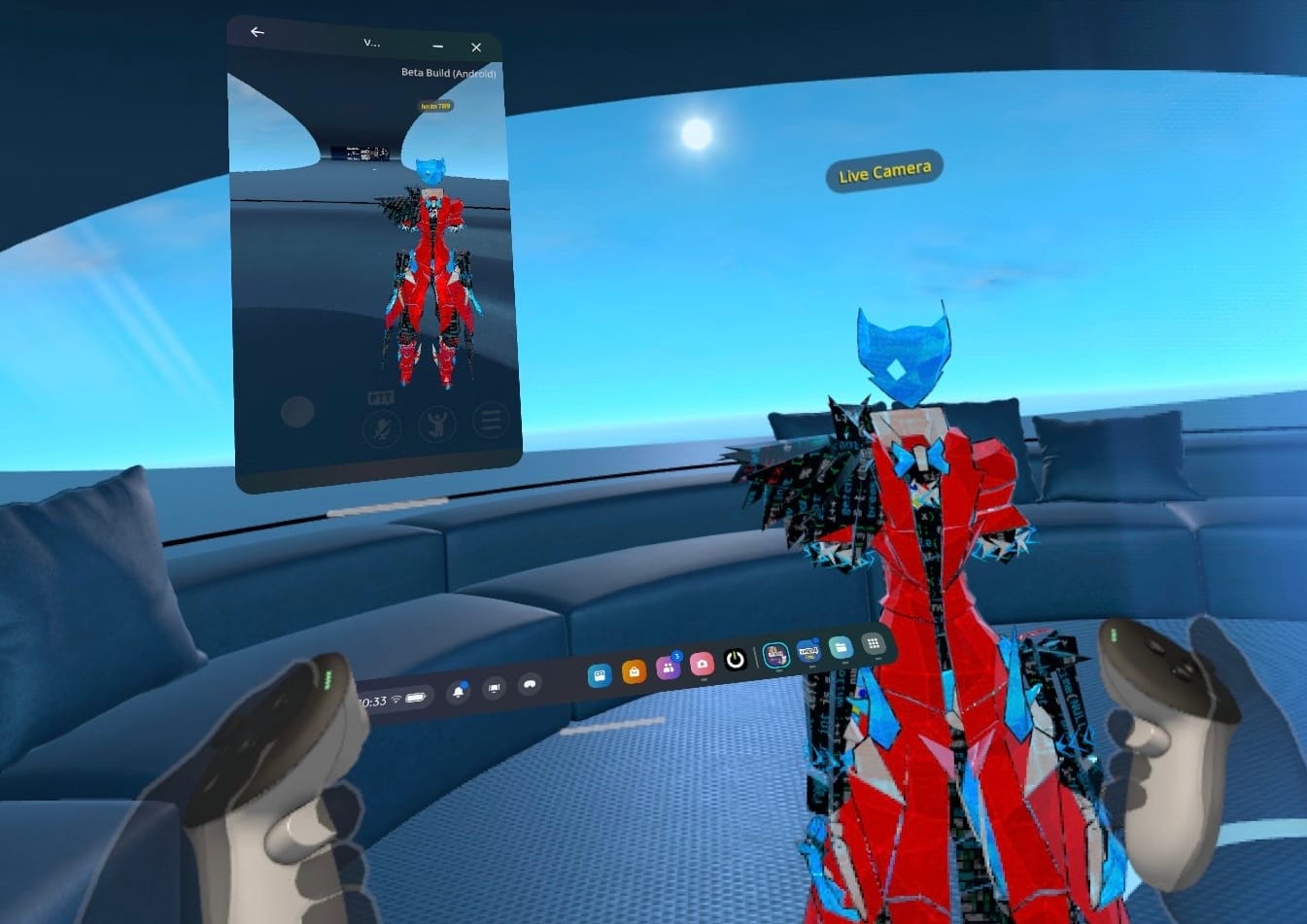Running VRChat inside VRChat is possible in Quest standalone headsets.
The Android beta of VRChat can run as a 2D app installable via sideloading. This has been technically possible for some time, but as Meta improves multitasking capabilities for Horizon OS it is getting easier to check in on VRChat or another flat-screen Android app while waiting for something to happen in a completely different immersive world.
I ran a VRChat-ception experiment through a total of four instances of the app on my Quest 3:
- Virtual Desktop streaming fully immersive PC VRChat running on an NVIDIA RTX 2080.
- Quest-native fully immersive VRChat.
- A flat panel app of PC VRChat running on a Steam Deck and streaming through the 2D Android Steam Link app side loaded on the headset.
- Mobile VRChat .apk running as a 2D flat-panel Android app directly on Quest 3.
Here is a short video demonstrating Quest 3 running VRChat in standalone fully immersive mode with the VRChat mobile app running simultaneously.
0:00
That VRChat worked in all these scenarios is a testament to the platform’s ubiquity as well as the qualified openness of Valve and Meta. At the same time, the roundabout routes these packages take to their functionality point to the opportunities ahead for Apple, Google, and Valve in smoothing out what Meta’s approach here has made more difficult than it should be.
Flat2VR & VR2Flat
VRChat just laid off 30% of its workforce with its founders saying “we need an extended runway” to achieve “rocket-ship levels of success” in the next two to five years.
In virtual reality, windows and apps can be portals to places. For my experiment running an instance of VRChat while inside VRChat, that meant inhabiting an avatar while simultaneously using a window as a remote control for an android walking around the same space. While ridiculous – an Android app became an actual android in VR – it’s also evidence that VRChat is a sprawling landscape with borders too big to be wrapped around by the likes of existing platforms built by Meta, Valve, Apple and Google.
With Horizon Worlds, Rec Room, and Roblox also available in both flatscreen and VR too, it’s easy to imagine a future where you can switch between these modes at will inside the headset, condensing a world you’re inside into a floating window so you can more easily do other things, then going back inside it when you’re ready.
With a change this drastic to personal computers, you might also see why Meta’s CTO Andrew Bosworth would have a different perspective about the future of Android from Google’s XR team.





